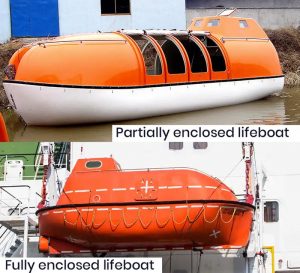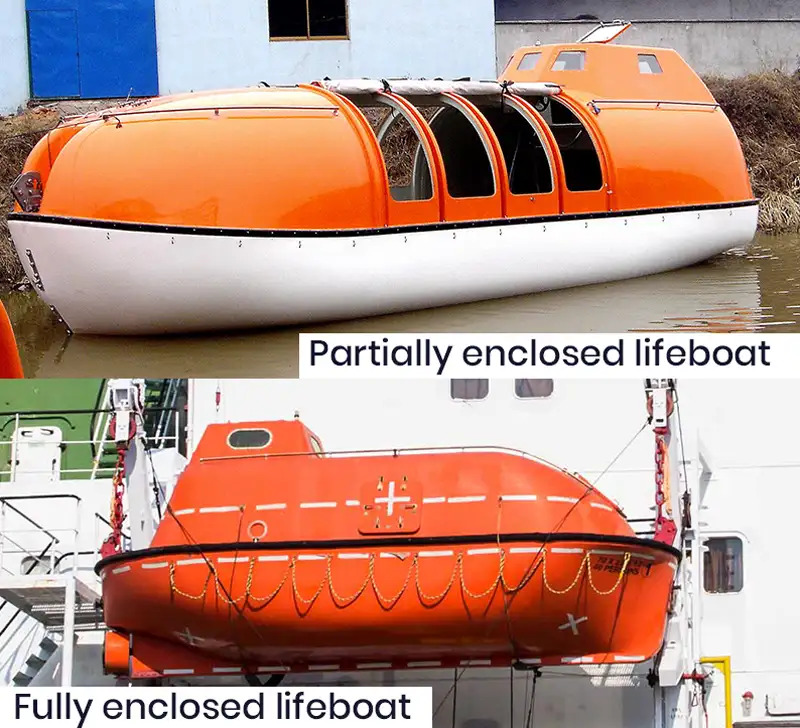The significance of ship lifeboats cannot be overstated in maritime safety. These critical components are regulated under the International Maritime Organization (IMO) conventions, primarily the International Convention for the Safety of Life at Sea (SOLAS). Lifeboats are pivotal for ensuring the safety of the ship’s crew and passengers in emergency situations.
Types of Lifeboats
According to the SOLAS Convention, there are several types of lifeboats available on board, each designed to meet specific needs and conditions:
- Open Lifeboats: The most traditional form of lifeboat, open lifeboats are not enclosed, making them vulnerable to harsh weather conditions. However, their design allows for quick embarkation and debarkation.
- Partially Enclosed Lifeboats: These lifeboats offer better protection than open lifeboats, with a partial covering shielding occupants from the elements. They are commonly used on passenger ships.
- Totally Enclosed Lifeboats: As the name suggests, these lifeboats are fully enclosed, providing maximum protection from weather and rough seas. They are equipped with an engine and are a common feature on modern ships, given their ability to provide enhanced safety.

Capacity and Life-Support Provisions
The capacity of lifeboats varies according to the size and type of the ship, ranging typically from 20 to 150 persons. SOLAS stipulates that there must be sufficient lifeboat capacity to accommodate every person on board the ship. Moreover, each lifeboat must be equipped with essential life-support provisions to sustain occupants until rescue. These include:
- Food Rations: Enough sustenance for each person, typically high-energy biscuits.
- Water: At least 3 liters of fresh drinking water per person.
- First Aid Kit: Equipped with necessary medical supplies to treat injuries.
These provisions are meticulously outlined in SOLAS regulations to ensure the survivability of the lifeboat occupants.
Launch Mechanisms
Lifeboats are equipped with different launch mechanisms to ensure a safe and efficient evacuation from the ship. The SOLAS Convention and IMO guidelines detail the procedures and requirements for each method:
- Gravity Launch: This is a traditional method where lifeboats are lowered into the water by gravity, using davits and winches.
- Davit Launch: Davit-launched lifeboats are swung out to the side of the ship and then lowered into the water, providing a controlled and stable descent.
- Free-Fall Launch: Designed for quick evacuation, free-fall lifeboats are released from a ramp located at the stern of the ship, entering the water by free fall. This method is particularly used on ships where prompt evacuation is critical.
Inspection Frequency
Regular inspection of lifeboats is paramount for ensuring their operational readiness. According to SOLAS, lifeboats must undergo a thorough inspection at least once a month. These inspections include checking the engine, equipment, provisions, and overall condition of the lifeboat. The date of the last inspection is recorded meticulously in the ship’s maintenance log to ensure compliance with the SOLAS regulations and to facilitate any necessary corrective actions promptly.
Emergency Procedures
Lifeboats are integral to a ship’s emergency response plan. SOLAS Convention mandates ships to have well-documented and rehearsed procedures for launching lifeboats. In the event of an emergency, the ship’s crew follows a predefined set of actions to ensure the swift and orderly launching of lifeboats, minimizing panic and ensuring the safety of all persons on board. Regular drills are conducted to familiarize the crew and passengers with the procedures, and any potential challenges or bottlenecks are addressed proactively.
Ship lifeboats, as mandated by the SOLAS Convention and IMO guidelines, are a cornerstone of maritime safety. The stringent regulations governing their types, capacities, launch mechanisms, inspection frequencies, and emergency procedures underline their critical role in safeguarding lives at sea. By adhering to these standards, maritime stakeholders can contribute to enhancing safety and ensuring the well-being of all persons aboard ships in the ever-evolving maritime environment.

